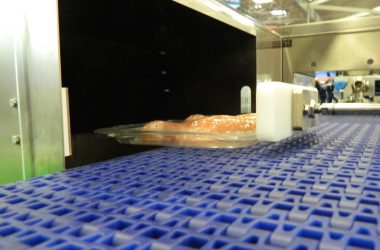Investing in a commercial passthrough dishwasher is a significant decision for any catering business, requiring careful planning and consideration to ensure optimal efficiency and performance.
Understanding Passthrough Dishwashers
Passthrough dishwashers, designed for high-volume commercial kitchens, offer remarkable efficiency in cleaning large quantities of dishes quickly. These systems operate with a conveyor setup, where dishes are loaded on one side and retrieved clean from the other, facilitating a seamless flow during busy service hours. The process begins when the operator lowers the hood to initiate the washing cycle, making it an ideal choice for establishments serving upwards of 200 meals daily.
Choosing the Right Size and Capacity
Before selecting a passthrough dishwasher, measure the designated area to ensure a proper fit. Consider not only the dimensions of the dishwasher but also additional space for associated elements like pre-rinse stations, exit tables, and drying areas. Height restrictions and potential obstructions should also be factored into your planning.
Commercial passthrough dishwashers excel in their capacity to handle up to 80 racks per hour, significantly outperforming other models. Features like auto-start hoods or rack conveyor systems can enhance operational efficiency, ensuring continuous cleaning cycles and minimising downtime.
Customisation and Efficiency
Modern passthrough dishwashers offer adjustable cycle settings to handle various dishwashing needs, from lightly soiled glassware to heavily greased cookware. Selecting a model with flexible wash cycles can improve cleaning effectiveness and accommodate different types of kitchenware.
Although they consume more power and water than front-loading models, passthrough dishwashers compensate with heightened efficiency and lower operational costs per dish cycle. Consider models with energy-saving features like low-volume wash and rinse tanks, double-skinned construction, and insulated boilers to further reduce utility costs.
Enhancing Your Setup with Additional Features
Beyond the primary washing functions, optimising your dishwashing setup involves integrating practical additions. Pre-wash stations are essential for removing debris before dishes enter the main wash cycle, while post-wash areas facilitate cooling and drying. Additionally, effective staffing and spatial planning are crucial to maximise the efficiency of your dishwashing operation.
Durability and Maintenance
Commercial passthrough dishwashers typically offer a lifespan of about 10 years, contingent upon proper maintenance. Regular cleaning of filters and timely servicing can extend the durability and efficiency of your dishwasher.
Commercial vs. Home Dishwashers
Unlike residential models that may take longer to complete a cycle, commercial dishwashers are engineered to wash, rinse, and dry within a mere 2 to 3 minutes. This speed, combined with higher temperatures, ensures superior cleanliness and sanitation.
Operating Temperatures
Commercial dishwashers operate at temperatures ranging from 49°C to 60°C during the wash cycle and between 82°C and 88°C during the rinse phase, effectively eliminating bacteria.
Suitable Detergents
It is crucial to use commercial-grade liquid detergent and rinse aids in passthrough dishwashers, as household detergents are unsuitable for these high-efficiency machines.
Choosing the right commercial passthrough dishwasher involves a detailed understanding of your kitchen’s operational demands and space limitations. By considering these aspects and opting for a dishwasher equipped with the right features, you can enhance your kitchen’s efficiency, reduce operational costs, and ensure consistent cleanliness throughout your service hours.










